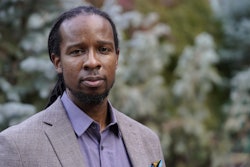ACE Conference: More Research Needed
on Experiences of Minority Women Leaders
By Molly Nance
LONG BEACH, Calif.
Higher education is seeing a gradual change in the face of its leadership, as minority women are increasingly emerging as directors, associate directors, vice provosts and presidents of academic institutions. With each woman’s success, there’s a desire to keep their numbers rising and to create a network of support.
During the third annual Women of Color Summit, sponsored by the American Council on Education, women from all over the country discussed their career objectives, leadership strategies and research findings.
The overall consensus of the summit was that more research needs to be done on the career advancement and leadership of minority women. Quantitative research on the small but rapidly growing community of minority women leaders is lacking, but there are some qualitative reviews. For example, Dr. Kandace Hinton, an assistant professor of educational leadership, administration and foundations at Indiana State University, examined the experiences of five Black women in higher education.
“I wanted them to know that I was interested in knowing where they started. I always think people have a story, a story behind the glory,” she said. “Career development is an evolutionary process, rather than a static phase.”
Dr. Patricia G. Parker, an associate professor of communication studies at the University of North Carolina, examined 15 Black women to see how their corporate leadership styles differed from the traditional styles of White men and women. She noted that higher education has historically been uninterested in learning about the leadership experiences of minority women.
In both Hinton and Parker’s studies, the Black women tended to hail from middle-class socioeconomic backgrounds and retold stories of segregation.
“Black women are as diverse as anybody else. Their stories combined, however, speak to shared experiences,” Hinton said.
“The women in my study were encouraged and taught to develop self confidence, to be independent, reliant, remain true to themselves no matter what circumstances and to stay connected to the Black community,” added Parker.
During the summit, panelists and participants repeatedly invoked the motto, “Lift as you climb.”
“I was told to keep your hands full. In one hand, someone is always dragging you up, and the other hand has to be pulling another person along,” said Dr. Ding-Jo H. Currie, president of Coastline Community College.
Women of color also have to “watch their back,” not only from White men and women, but also from each other, participants said.
Dr. Mildred Garcia, president of Berkeley College of New York and New Jersey, said she was naïve during the beginning of her career, thinking that if she worked hard and did as she was told, the other women in power would stand by her.
“I was betrayed by my own sisterhood,” she said.
Garcia urged other minority women to “not buy into the elitism of higher education” as they pursue leadership positions, and said they should not lose themselves “in the process.”
The world of academia is not always welcoming, added Dr. Yolanda T. Moses, vice provost of Conflict Resolution at the University of California, Riverside and former president of the American Association for Higher Education.
“We make assumptions that this place is a haven, is a neutral place and that everybody has everybody’s interest at heart,” she said. “That’s not the case, because we bring into those environments the baggage that we carry.”
© Copyright 2005 by DiverseEducation.com


















